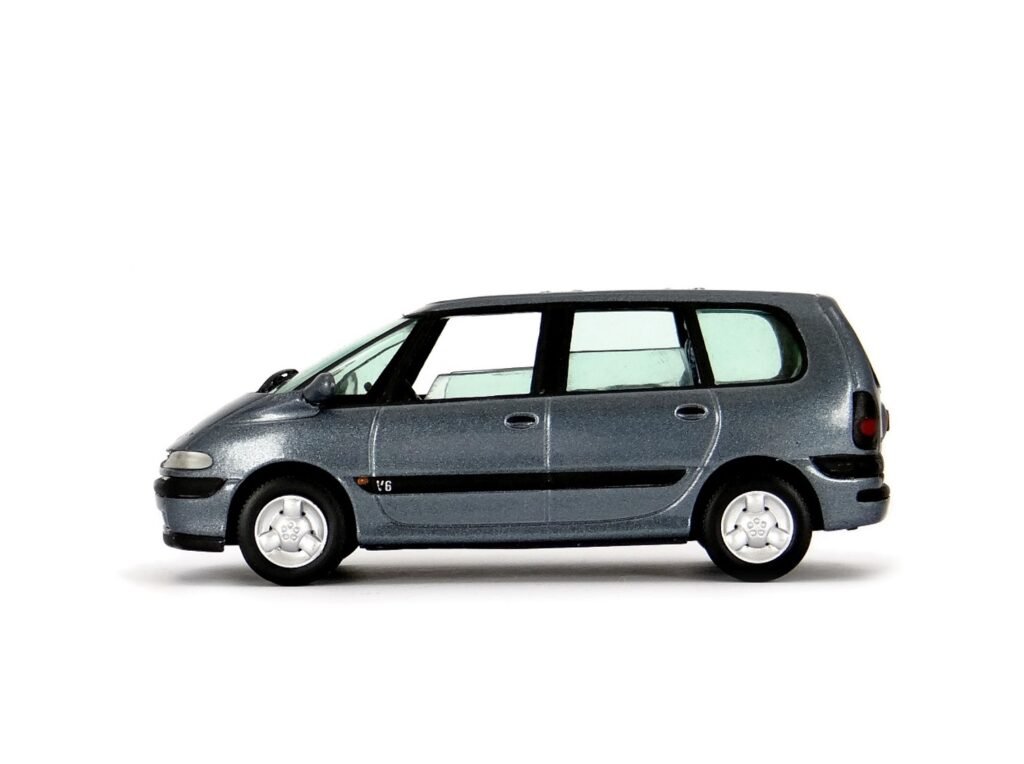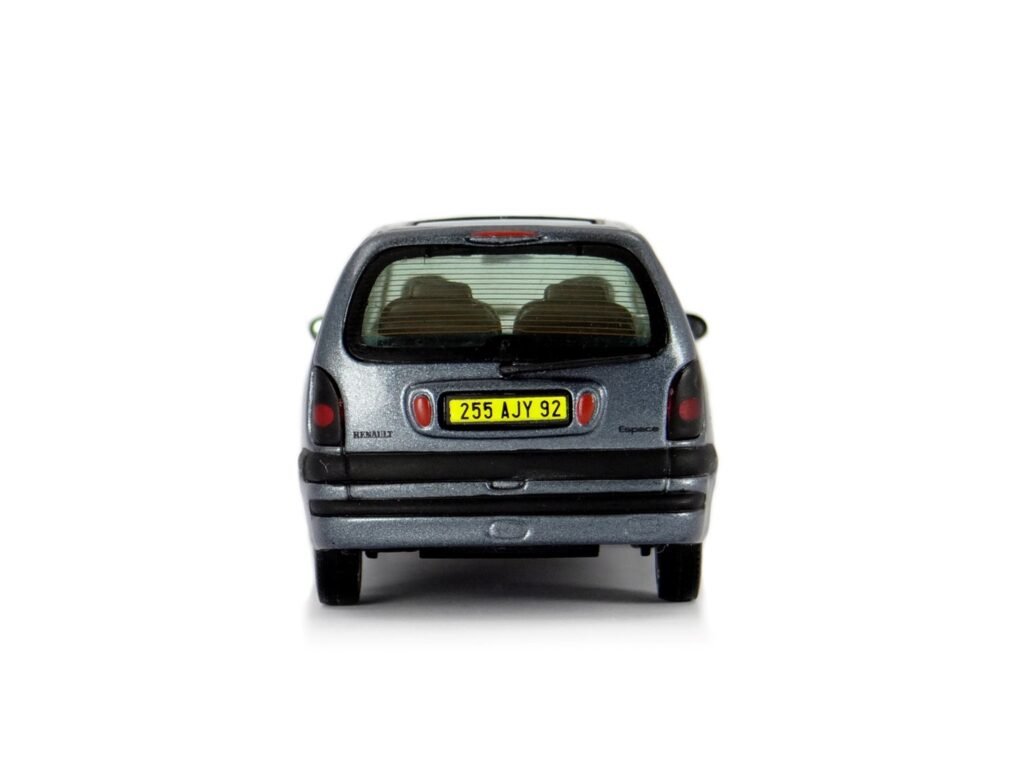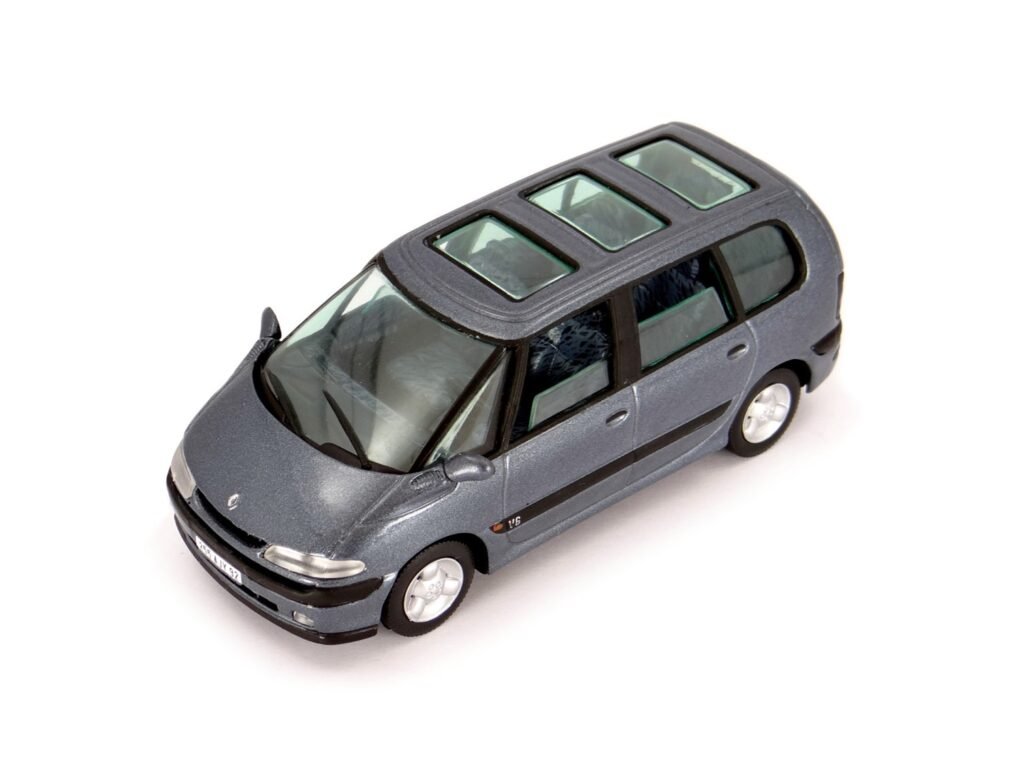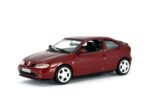Renault Espace to pionier segmentu MPV w Europie. Choć początkowo było wiele obaw czy nowatorski model się spodoba, okazał się sukcesem. Inni producenci podchwycili temat w połowie lat 90., więc trzecia generacja Espace z 1996 roku miała już wielu mocnych rywali.

Dla Renault była to zupełnie nowa sytuacja, bowiem po raz pierwszy musiało stawić czoła zaciętej konkurencji w segmencie, który samo stworzyło. Modele takie jak Citroën Evasion, Ford Galaxy czy Volkswagen Sharan zaczęły zdobywać część rynku samochodów rodzinnych, zmuszając Renault do adaptacji. Premiera nowej generacji była idealną okazją dla firmy do potwierdzenia swojego kunsztu w budowaniu aut MPV i zaznaczenia przewagi nad rywalami.
Espace III nie było może przełomowe, ale na pewno było wielkim skokiem naprzód względem poprzednich modeli. Samochód zbudowano na nowoczesnej płycie podłogowej Laguny I. Po raz pierwszy za projekt nadwozia w całości odpowiedzialne było samo Renault, a nie tak jak dotychczas, Matra. Styliści chcieli nadać nadwoziu możliwie lekki i stylowy wygląd. Samochód zachował z grubsza swój dotychczasowy kształt, jednak zgodnie z trendami lat 90. był bardziej obły i opływowy.
Duże zmiany zaszły we wnętrzu. Projektanci Renault postanowili odejść od klasycznego układu deski rozdzielczej. W zamian, zaoferowali pełen zamykanych schowków futursytyczny kokpit z centralnie umieszczonymi, elektronicznymi wskaźnikami. Pomimo futurystycznego wyglądu, komfort i wszechstronność pozostały głównymi cechami ponadprzeciętnie przestronnego wnętrza. Kabina w komfortowych warunkach mieściła siedem osób w układzie 2-3-2. Siedzenia można było z łatwością regulować, przesuwać oraz demontować, co umożliwiało prostą konfigurację wnętrza w zależności od bieżących potrzeb. Pozytywne wrażenia w podróży potęgowało natomiast bardzo bogate, jak na tamten czas, wyposażenie. Samochód można było wyposażyć m.in w rozbudowany system audio, wielostrefową klimatyzację, nawigację oraz telefon.
Absolutną nowością w gamie Espace była przedłużona o 25 cm odmiana Grand zaprezentowana w 1998 roku. Grand Espace miał aż 479 cm długości i większy o 17 cm rozstaw osi. Dzięki temu oferował w kabinie jeszcze więcej miejsca i nadal duży bagażnik (520 l) przy komplecie siedmiu pasażerów. Ponadto, Espace mogło pochwalić się tytułem pierwszego minivana, który zdobył (maksymalną wtedy) ocenę czterech gwiazdek w testach zderzeniowych Euro NCAP.
Przez cały okres produkcji gama silnikowa Espace była dość skromna. Składała się z benzynowych jednostek 2.0 (moc 115 KM przed lifitingiem i 140 KM po) oraz 3.0 V6 (167 KM przed liftingiem i 190 KM po). Dla oszczędnych przewidziano turbodiesle 1.9 dTi (98 KM) i 2.2 dT (113 KM) a w wersji poliftingowej jednostkę 2.2 dCi (115/130 KM) z wtryskiem common rail.
Trzecia generacja Espace potwierdziła, że Renault wie jak robić duże rodzinne vany. Pomimo zaciętej konkurencji, Espace III pozostało najpopularniejszym samochodem w swojej klasie. Do końca produkcji w 2002 roku, taśmy fabryki opuściło 356 323 egzemplarze trzeciej generacji modelu.

O miniaturze – Renault Espace
Dzisiaj przedstawiam Wam model diecast Renault Espace w skali 1:43 produkcji Vitesse. Wiem, że u niektórych ta firma budzi mieszane uczucia, ale akurat model Renault Espace wyszedł Vitesse bardzo dobrze. Pomimo, że jest to dość wiekowa miniaturka, bo wydana prawie 30 lat temu, to świetnie zniosła próbę czasu. Według mnie, nie odbiega znacząco od wielu współczesnych miniatur.
Modelik jest dobrze odlany i posiada odpowiednie proporcje nadwozia. W przeciwieńtwie do wielu innych miniatur Vitesse, brak w nim otwieranych elementów (podobnie jak np. w Clio II). Niekoniecznie jest to wadą, bo dzięki temu nie ma w modelu nienaturalnie grubych szczelin. Warto zwrócić uwagę na odwzorowanie wnętrza – producent włożył w to dużo wysiłku, wiernie oddając nawet wzór tapicerki!
Ogółem, uważam model diecast Renault Espace firmowany przez Vitesse za udany. Dobrze odwzorowuje rzadko już dzisiaj spotykany samochód.
Na koniec, zapraszam wszystkich do odwiedzenia MiniAutomobili na Facebooku i Instagramie!
*** ENGLISH ***
The Renault Espace is a pioneer of the MPV segment in Europe. Although there were initial concerns whether the innovative model would be well-received, it turned out to be a success. Other manufacturers picked up on the concept in the mid-90s, so the third generation of the Espace introduced in 1996 had to face many strong rivals.

For Renault, this was a completely new situation, as it was the first time the company had to face fierce competition in a segment it had created. Models like the Citroën Evasion, Ford Galaxy and Volkswagen Sharan had begun to capture a share of the family car market, pushing Renault to adapt. The launch of the new generation was the perfect opportunity for the company to confirm its expertise in building MPVs and assert its advantage over competitors.
The mk3 Espace wasn’t perhaps ground-breaking, but it was definitely a significant leap forward compared to previous models. The car was built on the modern platform of the mk1 Laguna. For the first time Renault itself was fully responsible for the body design, rather than outsourcing it from Matra, as had been the case previously. The designers wanted to give the body a light and stylish look. The car retained roughly its previous shape but, in line with 90s trends, it became more rounded and streamlined.
Significant changes happened inside the car. Renault’s designers decided to move away from the traditional dashboard layout. Instead, they offered a futuristic cockpit with centrally placed electronic displays and a full set of storage compartments. Despite the futuristic look, comfort and versatility remained the key features of the exceptionally spacious interior. The cabin could comfortably accommodate seven passengers in a 2-3-2 configuration. The seats were easy to adjust, slide and remove, allowing to easily configure the interior depending on current needs. The positive travel experience was enhanced by the generous equipment for the time. The car could be equipped with gadgets such as an advanced audio system, multi-zone climate control, satnav and a phone.
An absolute novelty in the Espace range was the Grand model extended by 25 cm, introduced in 1998. The Grand Espace measured 479 cm in length and had a wheelbase extended by 17 cm. This provided even more space in the cabin and still offered a large boot (520 litres) with all seven seats in use. The Espace was also noteworthy for holding the title of the first minivan to achieve (at the time) the maximum rating of four stars in the Euro NCAP crash tests.
Throughout its production run, the engine range of the Espace was relatively modest. It consisted of a 2-litre (115 HP before the facelift and 140 HP after) and a 3.0 V6 (167 HP before the facelift and 190 HP after) petrol engines. For those seeking better fuel efficiency, there were turbo-diesel options: the 1.9 dTi (98 HP) and the 2.2 dT (113 HP), and in the post-facelift model, a 2.2 dCi unit (115/130 hp) with common rail injection.
The third generation of the Espace certainly confirmed that Renault knew how to make large family MPVs. Despite strong competition, the mk3 Espace remained the most popular car in its class. By the end of production in 2002, a total of 356,323 units of the third generation model had rolled off the assembly lines.

About the miniature – Renault Espace
Today, I present to you the 1:43 scale diecast model of the Renault Espace produced by Vitesse. I know that for some people this brand evokes mixed feelings, but Vitesse actually did a very good job of the Renault Espace diecast model. Despite being quite an old miniature, released almost 30 years ago, it has withstood the test of time very well. In my opinion, it doesn’t differ significantly from many modern miniatures.
The model is well-cast and has the correct body proportions. Unlike many other Vitesse miniatures, it does not have any opening parts (similar to the Clio II, for example). This is not necessarily a disadvantage, as it means there are no unnaturally thick shutlines in the model. It’s worth noting the attention to detail in the interior – the manufacturer put a lot of effort into this, even closely reproducing the pattern of the upholstery!
Overall, I consider the diecast Renault Espace model from Vitesse to be a success. It accurately represents a car that is rarely seen today.
Lastly, I invite everyone to visit MiniAutomobile on Facebook and Instagram!
















